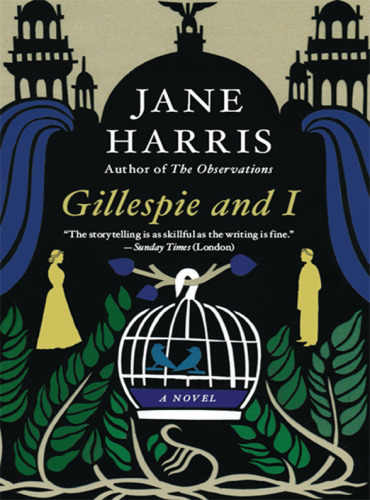
Gillespie and I
کتاب های مرتبط
- اطلاعات
- نقد و بررسی
- دیدگاه کاربران
نقد و بررسی

November 21, 2011
Harris’s haunting second novel finds Harriet Baxter, a single 30-something adrift after the death of her aunt, visiting the famous Glasgow International Exhibition in 1888. There she meets the Gillespies: Ned, a talented painter; his wife, Annie; their young children, Sybil and Rose; and Ned’s mother, Elspeth. In quick order Harriet becomes obsessively close to them, sitting for paintings, assisting Ned in his career, befriending Annie, and even helping take care of Sybil, whose increasingly disturbing behavior leads to the angelic Rose going missing while in her care. Months later, Harriet is unexpectedly arrested—for Rose’s murder. This is all presented through Harriet’s memoirs, written as an old woman in 1930s London and focused on the curious behavior of her maid, who may hold a mystifying connection to the Gillespie family. Harris (The Observations) succeeds with nuanced characters, including the mysterious Harriet, but takes too long to arrive at Harriet’s trial, the crux of the plot. Once there, however, the reader will be so thoroughly entrenched in the carefully arranged details and the courtroom’s gripping drama that there will be no turning back. Agent: Curtis Brown Group Ltd.

January 1, 2012
Elegant novel of love, loss and redemption among the Victorians and Caledonians. Harriet Baxter is a hither-and-thither kind of person, capable of getting where she needs to go, even if the mores of the time suggest that a 35-year-old woman should not properly be wandering off alone for "a sojourn to the magnificent spectacle that was said to bestraddle both banks of the River Kelvin." Yet, once they've fled the pea-soup fog of London and seen the bright lights of Glasgow, how are you going to keep the lasses from such wanderings? Introduce love into the mix, and you stand a chance—and so Harris, who staked out Victorian Scotland as her home turf in her debut novel The Observations (2006), does. Once on the auld sod, Harriet—who narrates these events from a distance of half a century—saves a woman from choking on her dentures. That act draws her into the orbit of the woman's family, which just happens to include a brilliant artist named Ned, whom Harriet instantly groks as a soulmate, if not necessarily a physical one: "His name is Gillespie, sir, and he's already married," she tells her stepfather about her newly kindled friendship. (On that point, how the Victorians managed to reproduce is a subject of mystery.) All this happens in a short span of pages, at the end of which Harris gives us to understand that things are not going to end well. Harris writes sensitively and in rich detail, whether conjuring up a Glaswegian streetscape or the elements of one of Ned's compositions. The imbroglio that she conjures up for the Gillespies is something of a potboiler, involving white slavery, unlawful carnal knowledge and Satanism. Or perhaps not: as Harriet complains, "It is incredible what the newspapers are able to get away with printing." The narrative holds up well to the very end, though the reader will have to have the ability to wend his or her way through the leisurely sentences appropriate to the time and place. A fine evocation of a lost era, and without a false note.
(COPYRIGHT (2012) KIRKUS REVIEWS/NIELSEN BUSINESS MEDIA, INC. ALL RIGHTS RESERVED.)

























دیدگاه کاربران